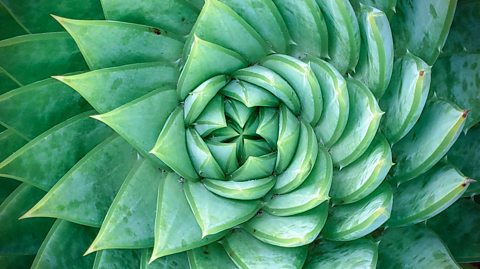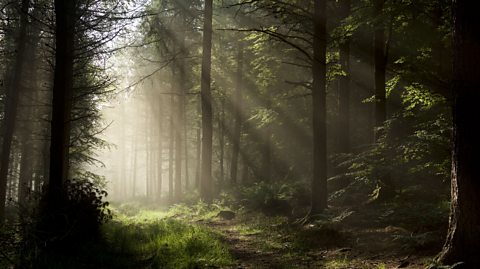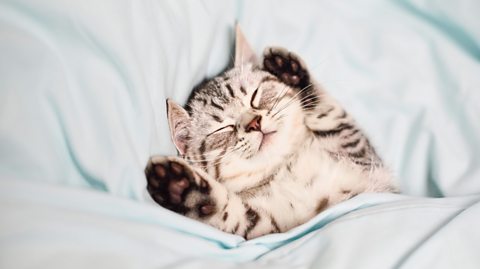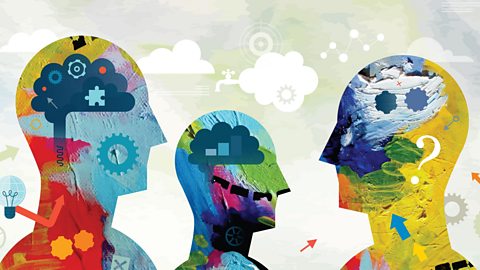When you think of relaxation, do you picture a calm sea or a lush nature scene?
It’s easy to feel like you’re being bombarded by visual content as you’re scrolling through social media, and impeccable Insta-worthy photos of pretty much everything are no exception. But did you know you can use visual content to your benefit? Research has found that taking a break to look at calming pictures may have a positive effect on your mental health. Start the year off right with these relaxing images.

Fractals
Have you ever wondered why those ‘satisfying’ videos on TikTok scratch an itch? Sometimes it’s a really good bit of slime, but usually it’s maths: repeated patterns tend to make us go ‘ooh’. These neverending complex patterns are known as An endlessly repeating geometric structure, and occur in nature, but manmade ones have the same effect too. Observing them can be an excellent visual addition to meditation techniques. Carving out some time to look at fractal artwork might help you focus when your thoughts are busy.


The colour blue
The colour blue was reported to be ‘the world’s favourite colour’ in 2015, with around a third of Britain citing it as their number one and 'calm' often being the reason stated why. It was overtaken in 2017 by a teal (blue-green) shade called Marrs Green, so there's something about these hues people find relaxing. This might not just be down to preference, as blue interiors have been proven to make us more comfortable: in a 2015 study, the colour blue had a short-term calming effect on students, and it also made them more creative. The working theory is blue reminds us of natural things like clear skies and peaceful seas, but more research is needed to fully understand this magical colour.
Naturally everyone is different, and this probably won’t work if you don’t like blue! Surround yourself with calming colours that work for you.

Nature scenes
Going outside has long been linked to health benefits such as reducing stress and lowering blood pressure. But even just looking at images of nature can have a positive effect - in fact, studies have found seeing fake plants or 'plant colours' has a similar effect on our brainwaves as real ones. This means that cultivating a ‘green space’, even with a poster of nature, is one way to boost your mood at home. Don’t forget to go out for fresh air and sunshine too, though.
And next time someone tells you to “Go touch grass”, you can respond, “Thank you for looking out for me!”


Seascapes
It’s no surprise that a ‘change of air’ has been a recommended remedy for centuries. Taking a trip to the beach has been shown to affect the nervous system, from the fresh sea breeze to the relaxing lull of the waves. Staring at a calm ocean is thought to induce a kind of ‘meditative state’ as it even changes the frequency of our brainwaves. Looking at beautiful seascapes may have a similar effect - try pairing a nice beach scene with some deep breathing, imagining the smells and sounds, and see how you feel. You may find it helps boost your creativity too!

Cute animals
You probably knew this one - and you’ll be even more delighted to know that seeing cute animals is indeed a proven way to improve your wellbeing. Looking at images with that ‘aww’ factor has been shown to reduce anxiety and give you a dose of ‘happy’ hormones. Even those who express this as ‘cute aggression’ will get a warm and fuzzy feeling from seeing a fluffy face.
Remember that looking at relaxing images isn’t a replacement for deeper self-care, but carving out five minutes a day to slow down with some satisfying pictures will always be beneficial. Bitesize has your next fill of cuteness here.
This article was published in January 2023
The science behind real life ice magic
Hair ice? Ice pancakes? Diamond dust? Here's the science behind these magical ice phenomena.

Can you wrap your head around these positively puzzling paradoxes?
Take a look at the paradoxes that have left us scratching our heads throughout the ages.

Quiz: The un-bear-ably cute teddy bear quiz
How much do you know about these famous bears?
